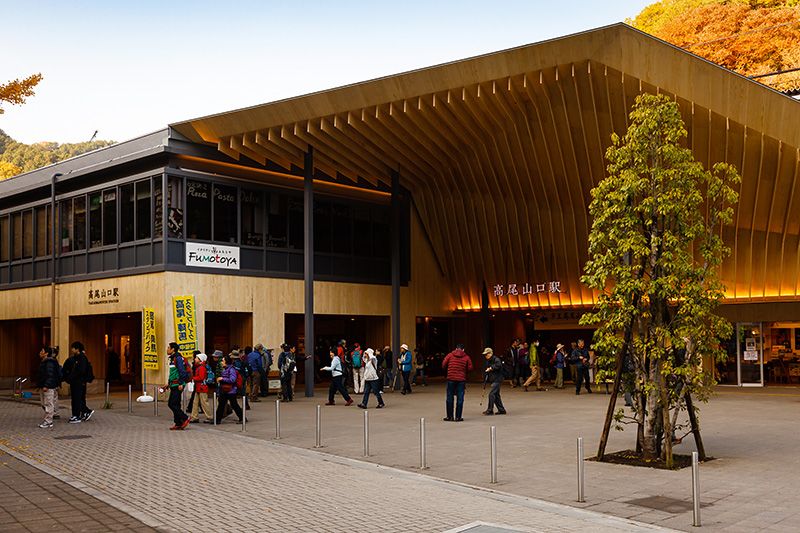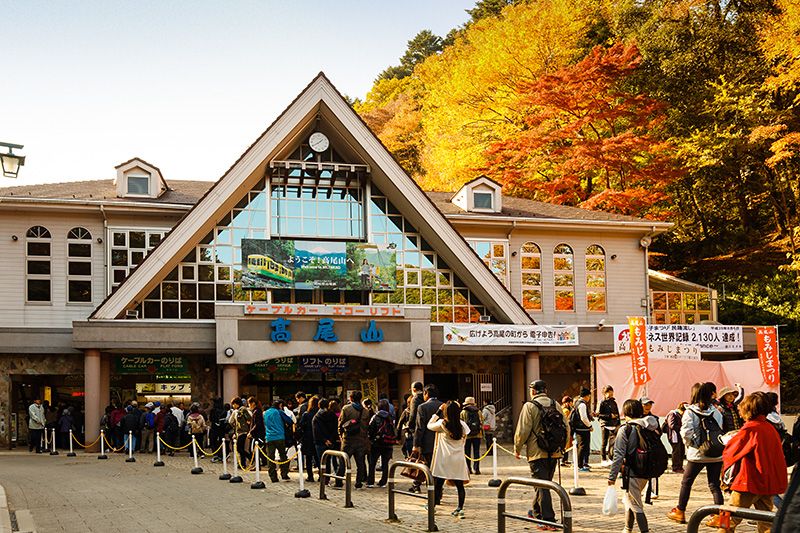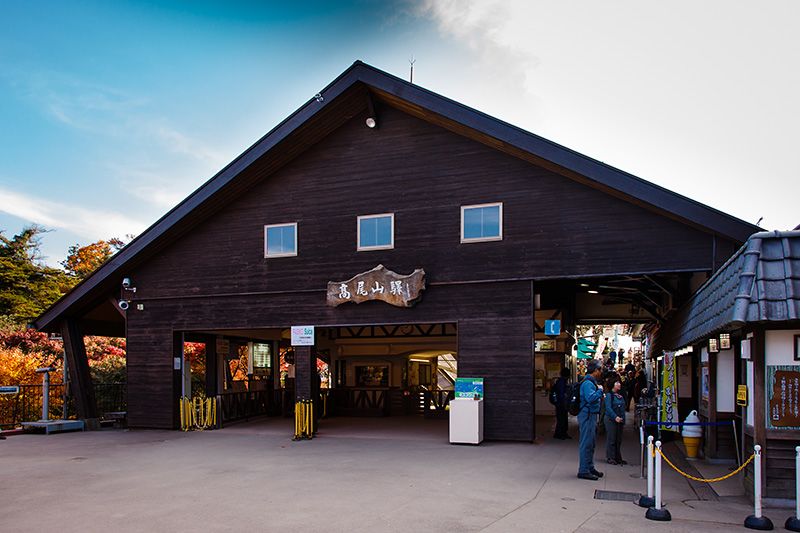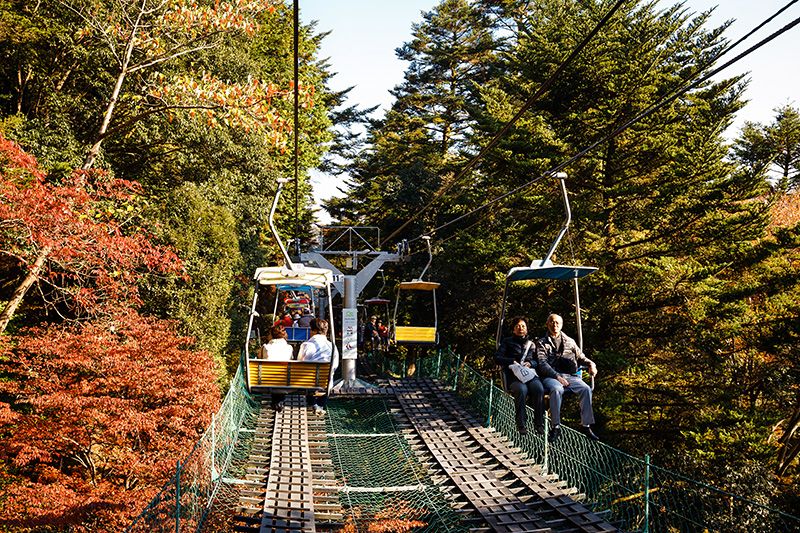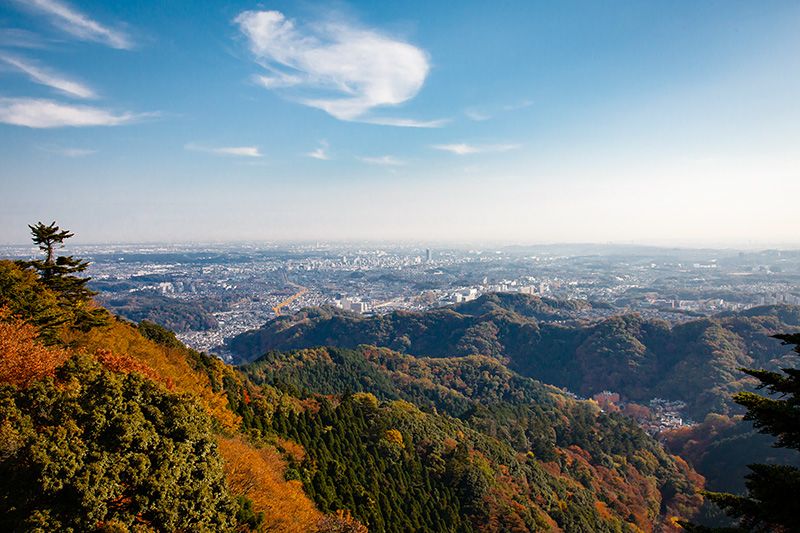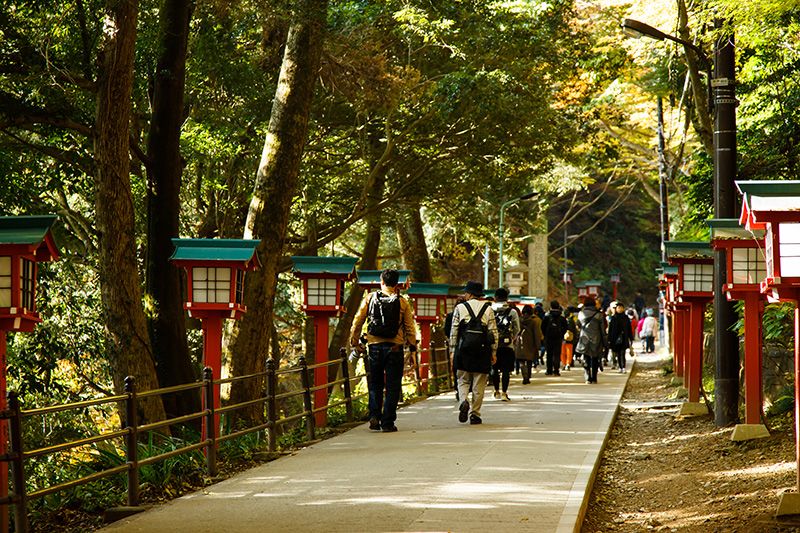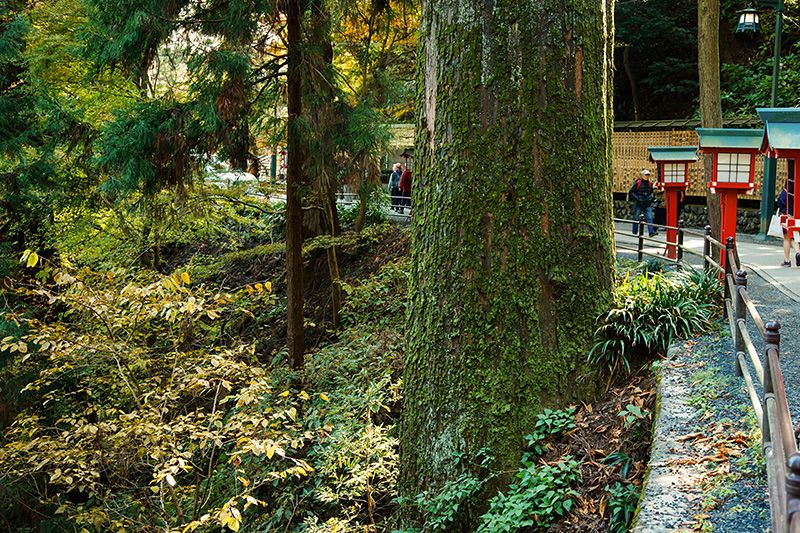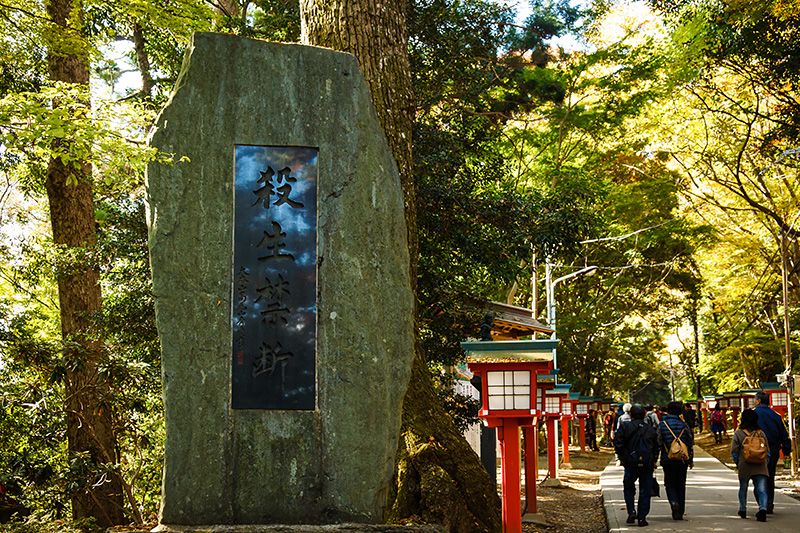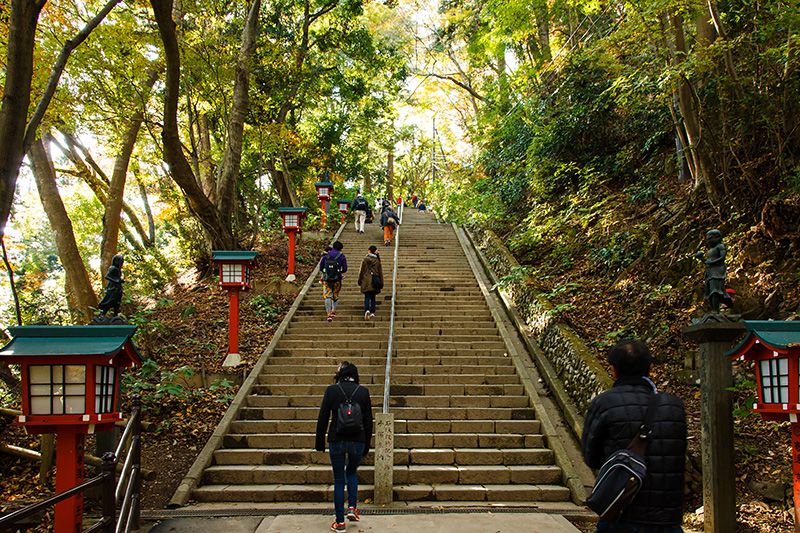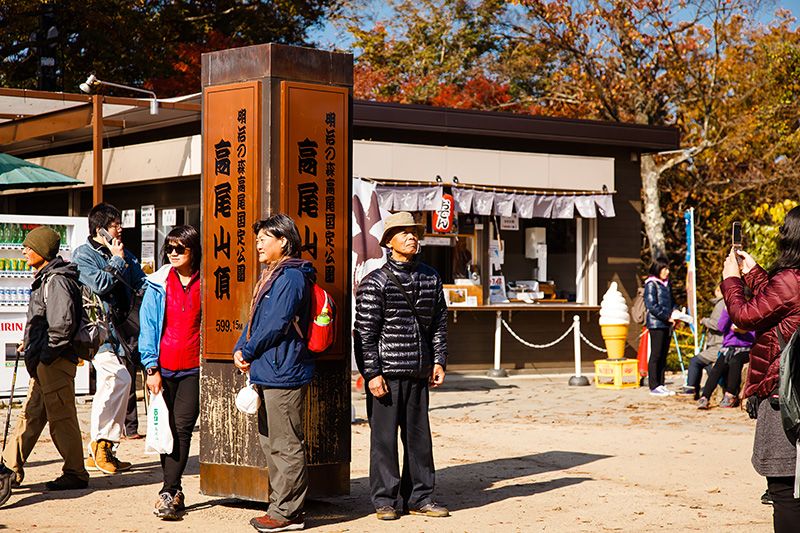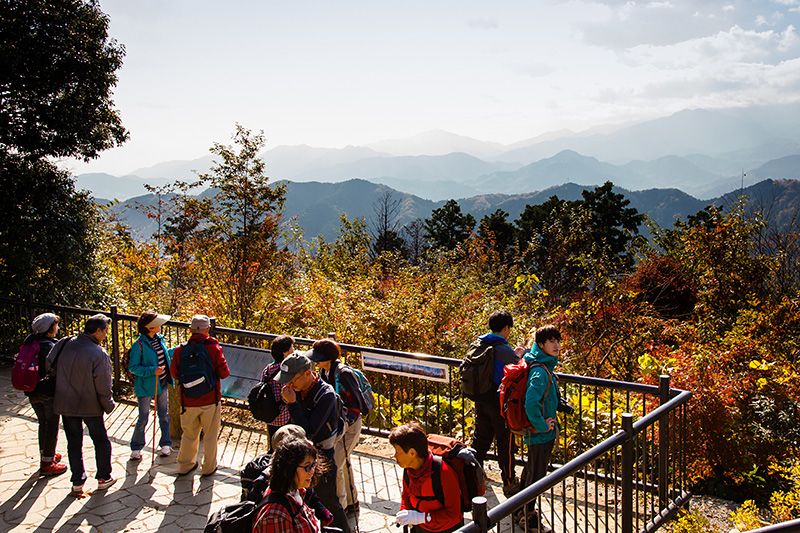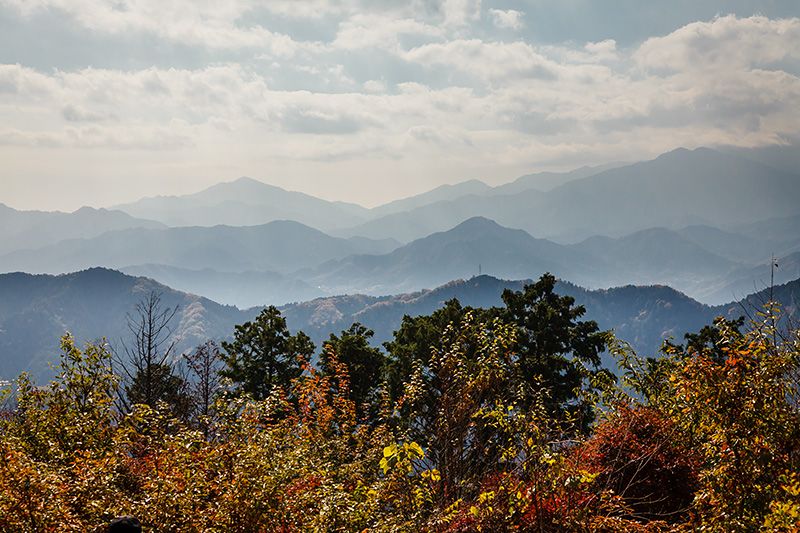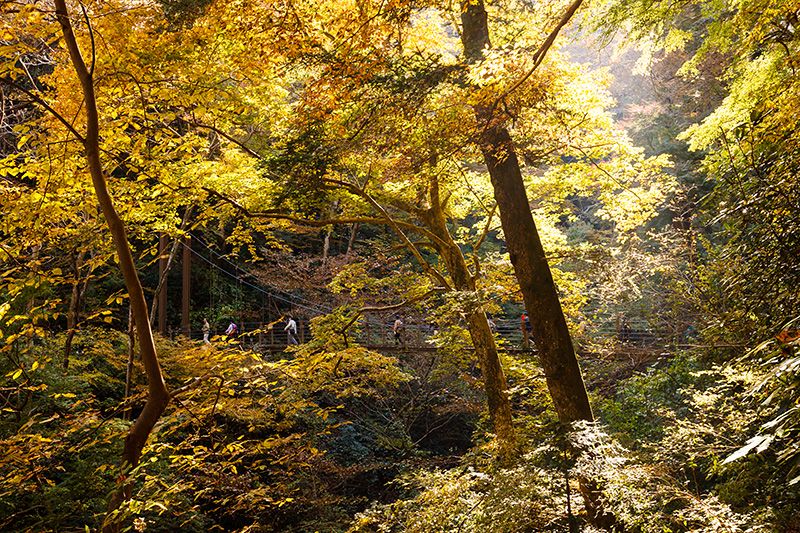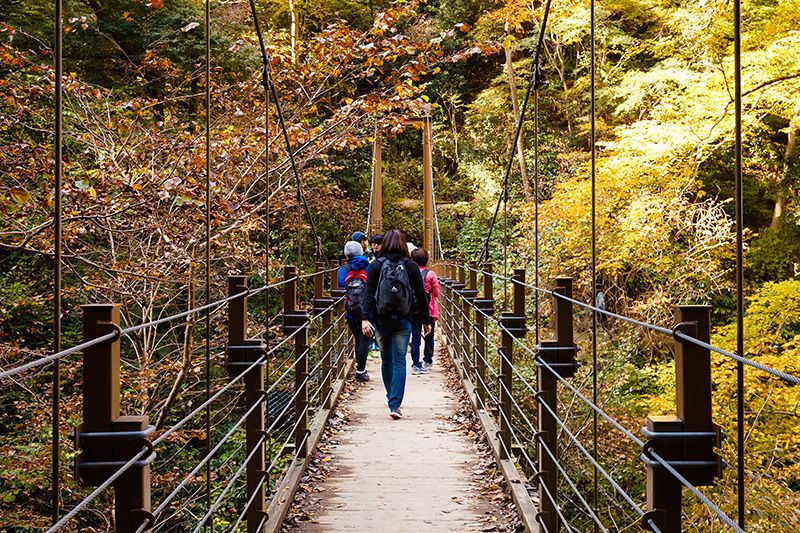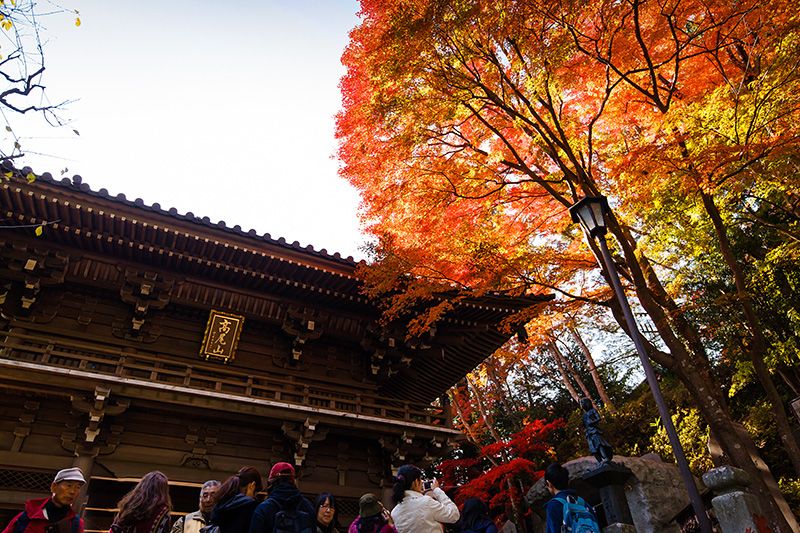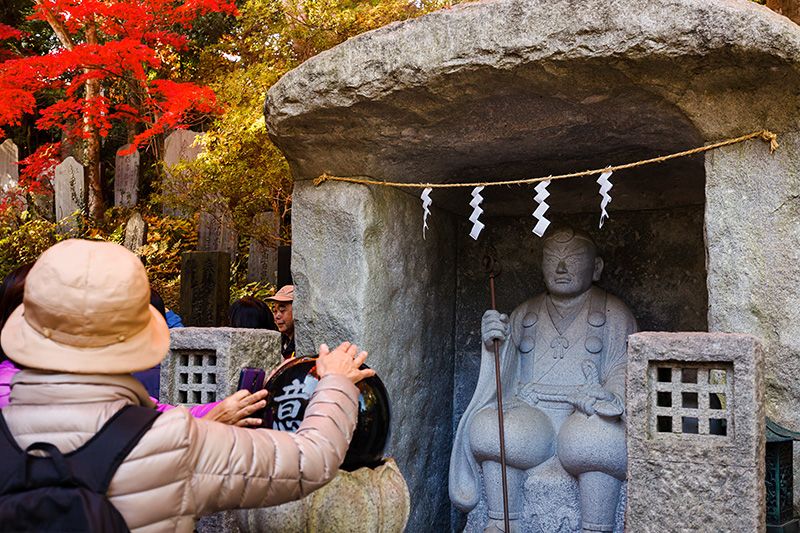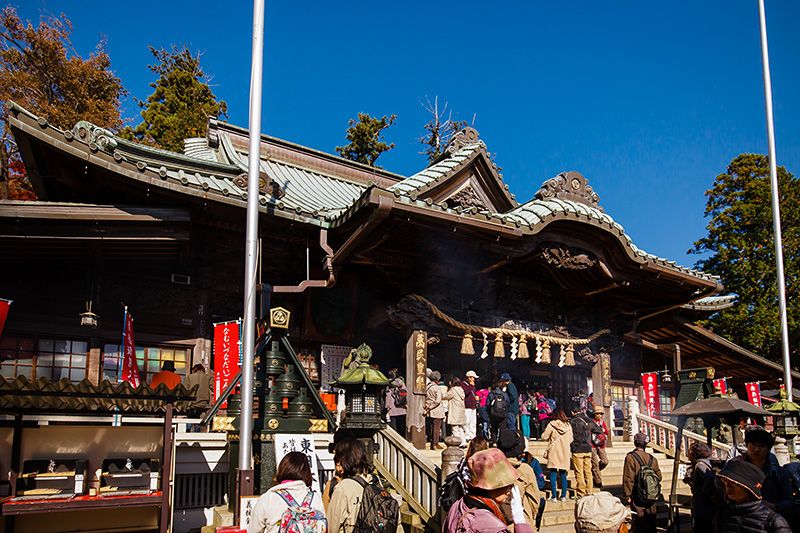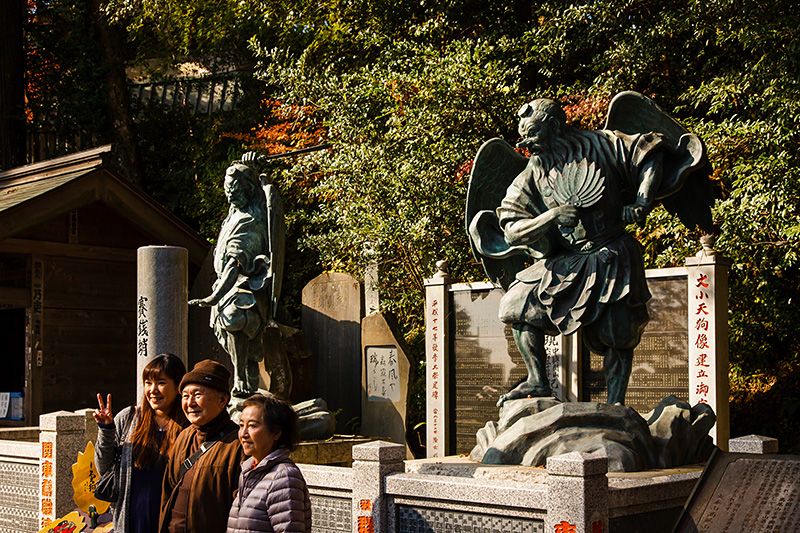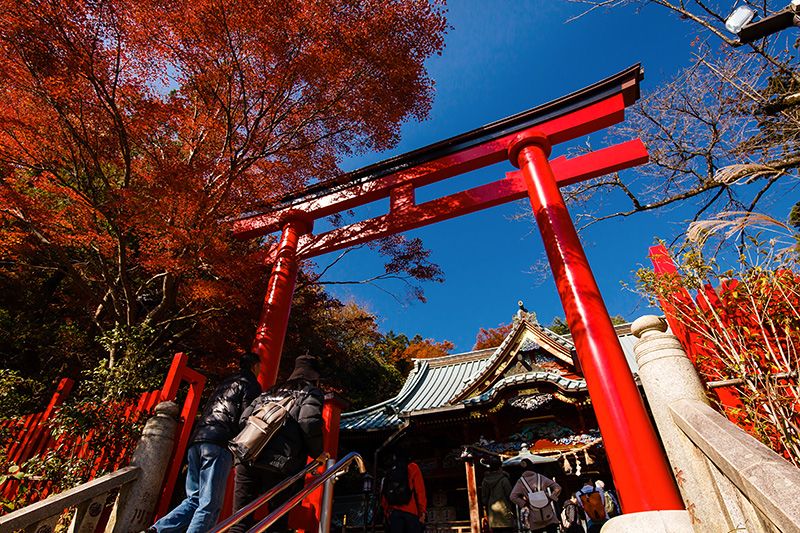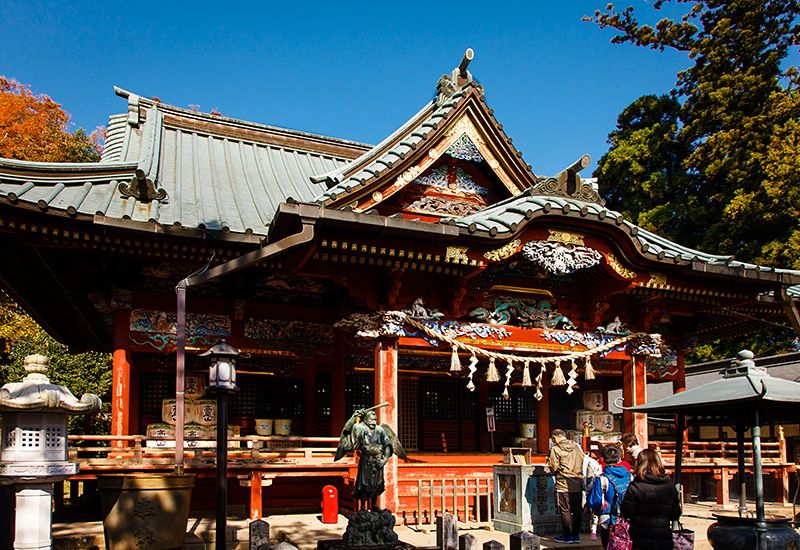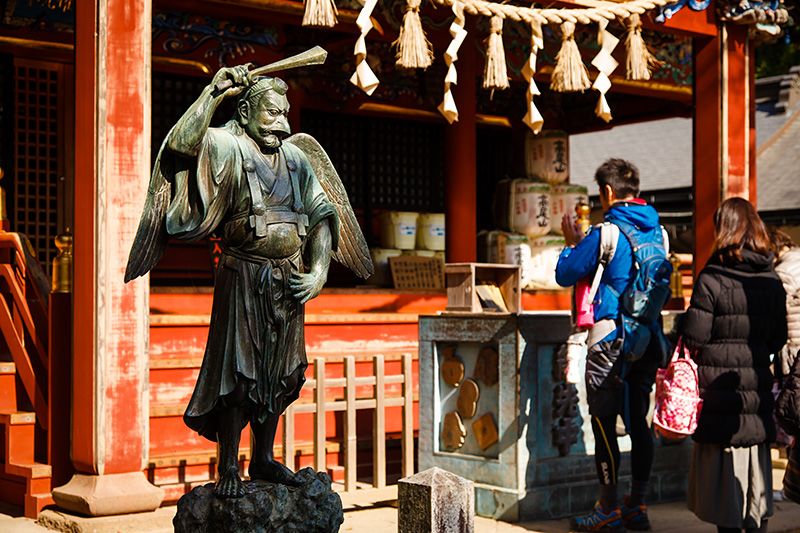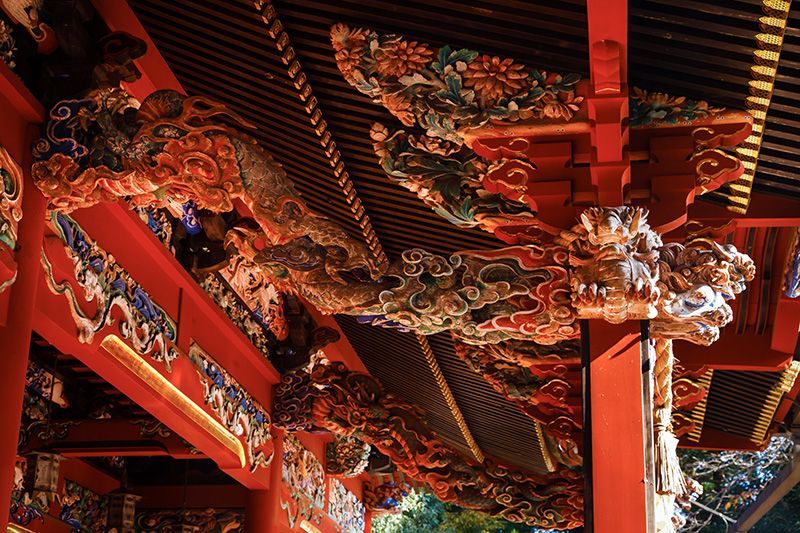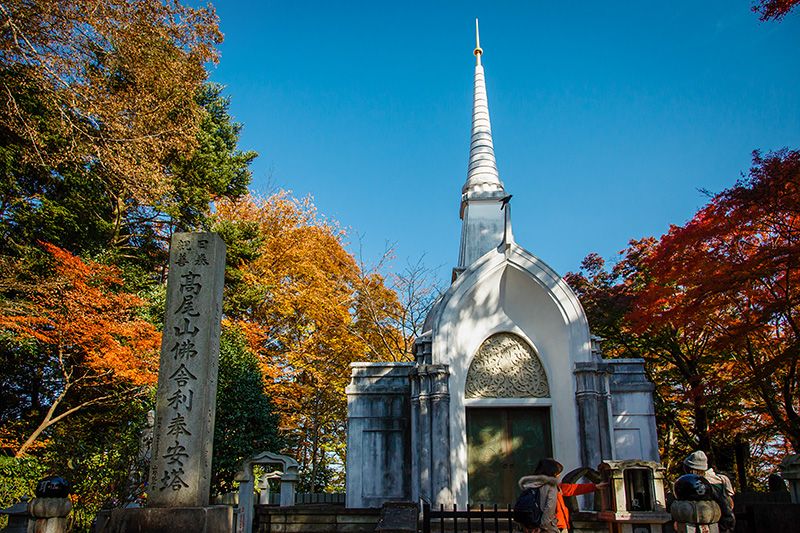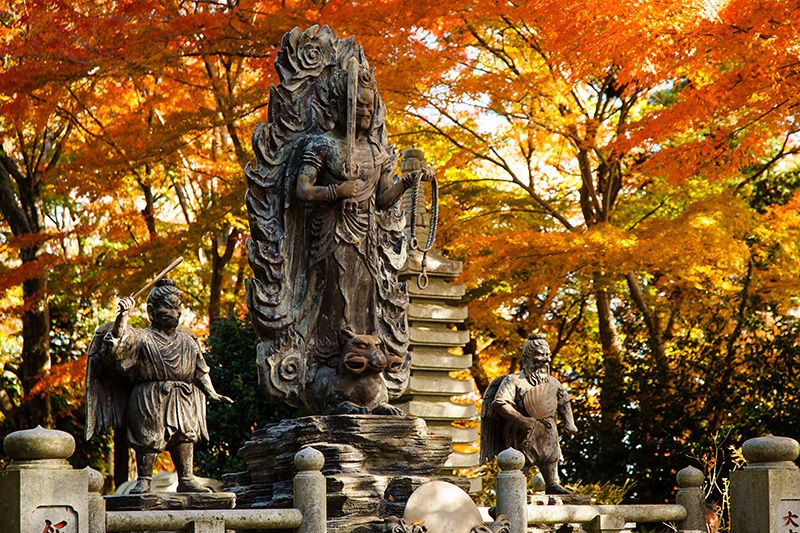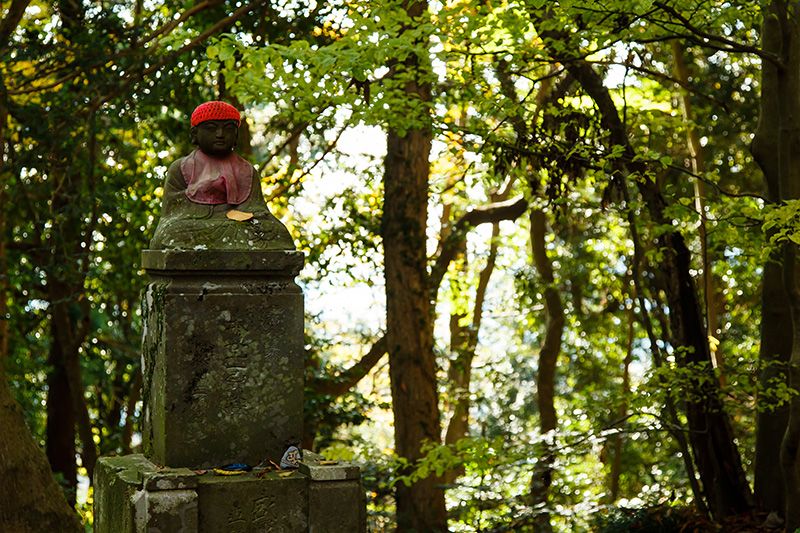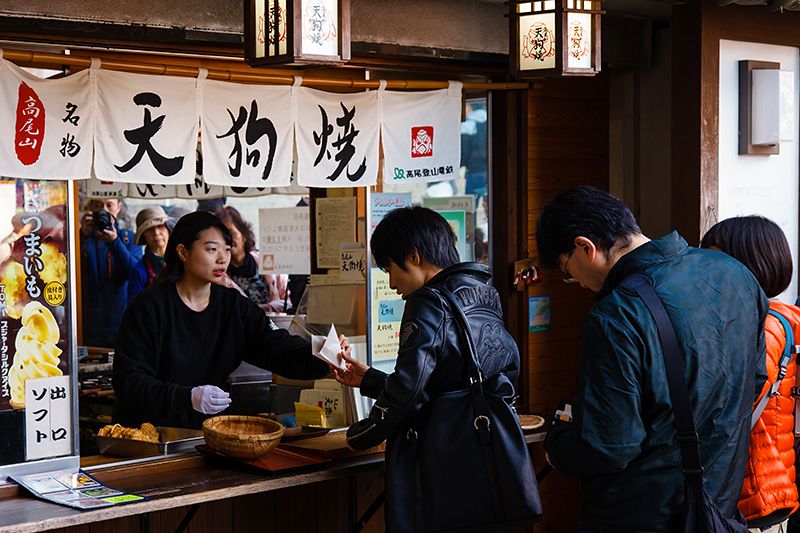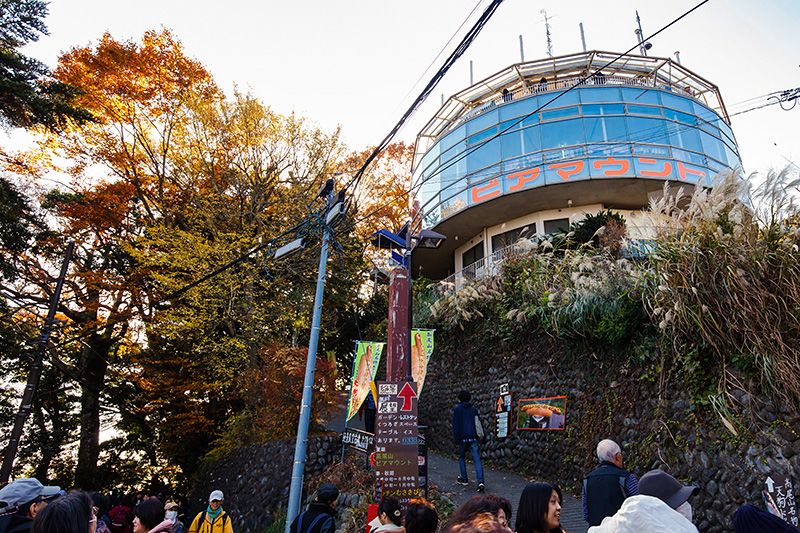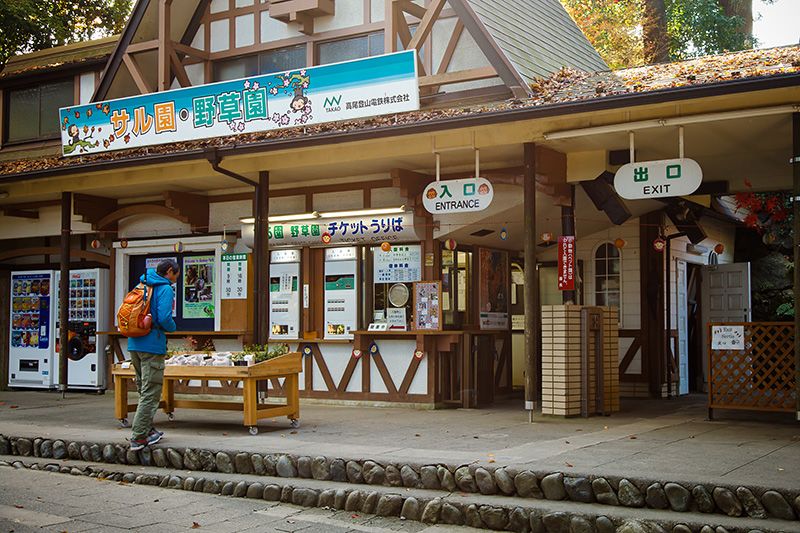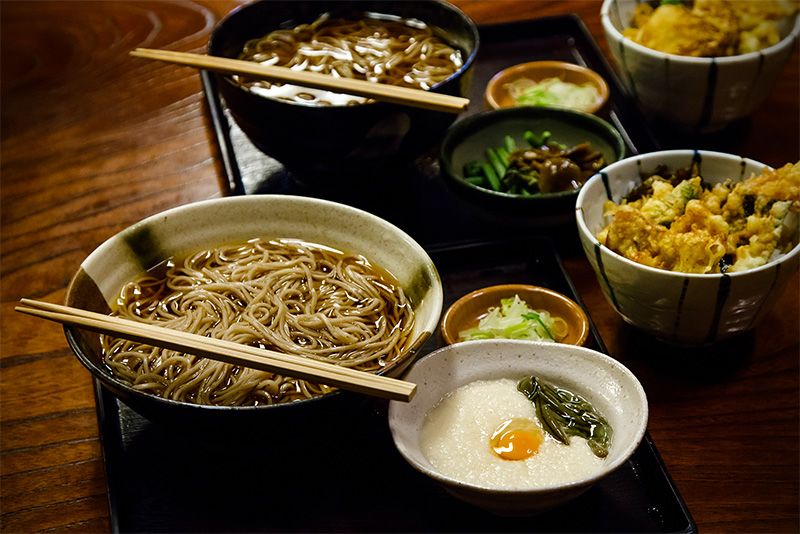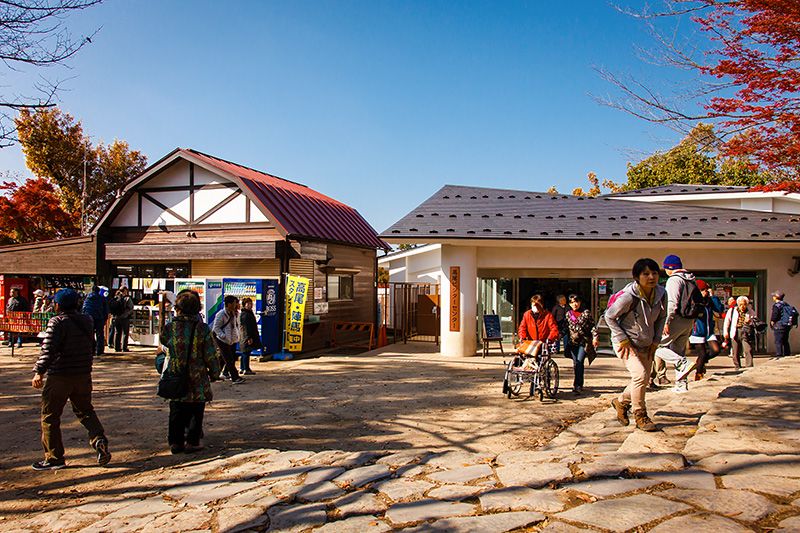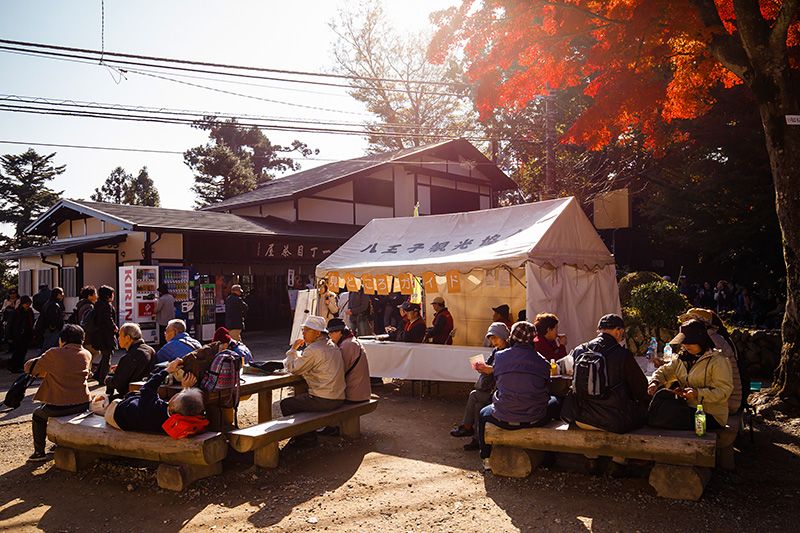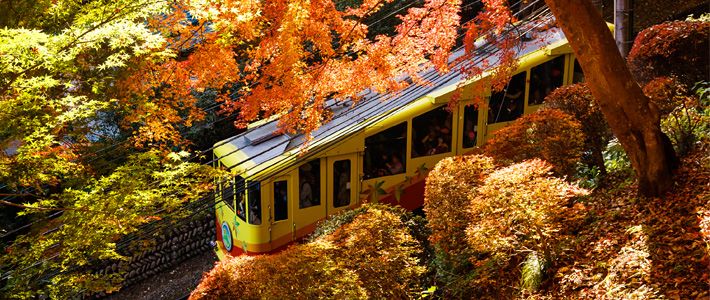
Japan’s Popular Tourist Destinations
Mount Takao: A Natural Treasure Nestled in Western Tokyo
Guideto Japan
Culture- English
- 日本語
- 简体字
- 繁體字
- Français
- Español
- العربية
- Русский
Located just a short hop from central Tokyo, in the western suburb of Hachiōji, Mount Takao has long been popular with day-trippers. Many international visitors head to the mountain for a little light hiking as well, particularly since the Michelin Green Guide gave the peak a three-star rating in 2007.
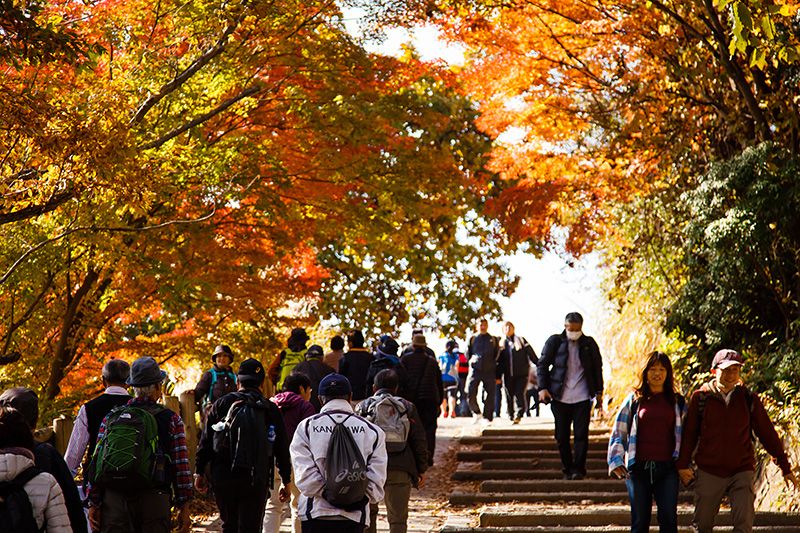 Climbers near the summit. The paths to the top are paved, making it a suitable mountain for even casual climbers.
Climbers near the summit. The paths to the top are paved, making it a suitable mountain for even casual climbers.
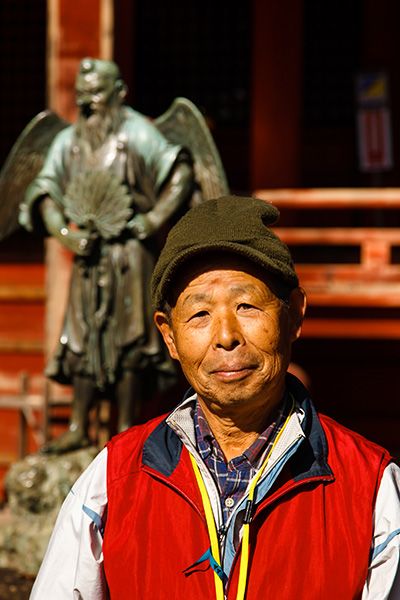 Mount Takao guide Sakamoto Tameaki pictured in front of a tengu statue at Yakuōin.
Mount Takao guide Sakamoto Tameaki pictured in front of a tengu statue at Yakuōin.
“Before the Michelin rating, Mount Takao had two million annual visitors,” explains Sakamoto Tameaki, a guide for the Hachiōji Tourist Association. That figure has now risen to three million, making it the most visited mountain in the world.
While happy about the increased profile of the mountain, Sakamoto laments that many visitors fail to take advantage of all that Takao has to offer and merely make the trip because it is included in their guidebooks. “Some people think it’s popular because it’s near central Tokyo, not too tall, and easy to climb. But in my opinion, the Michelin ranking and the growing number of tourists illustrate the natural, historical, and culinary appeal of Takao.”
Sakamoto explains that the mountain boasts 1,600 plant varieties. “That is around the same number of wild plant species in all of Britain,” he exclaims. “It is a small botanical reserve.” He proudly points out Takao’s many cultural treasures. “The Yakuōin temple is almost 1,300 years old and has a number of impressive buildings and memorials. The mountain is also famed as the residing place of the legendary tengu [a long-nosed supernatural being similar to a goblin]. In summer, you can enjoy a drink at a beer garden that sits 500 meters above sea level. There are lots of popular kinds of food too, including soba topped with tororo [grated yam] and tenguyaki sweets. Instead of just taking the cable car to the top and back, I wish people would explore Mount Takao more. That is why I decided to become a volunteer guide.”
Below are some of Sakamoto’s recommendations for where to go and what to do when visiting Mount Takao.
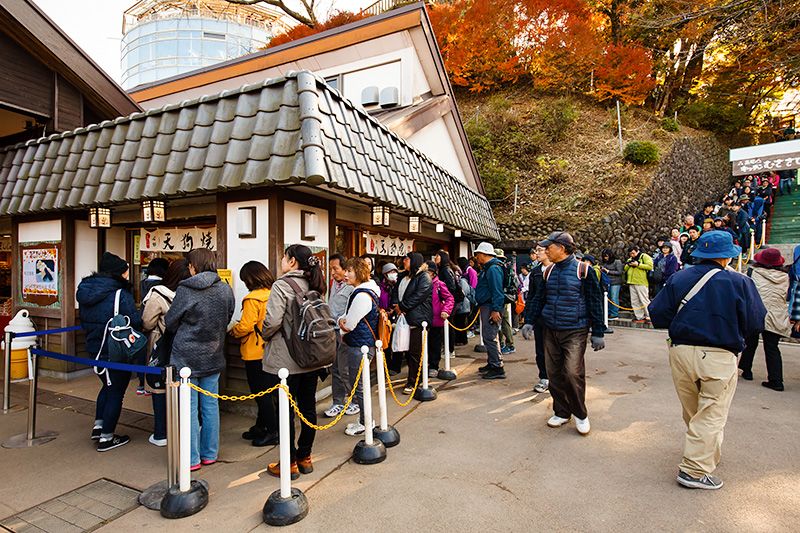 A line for Mount Takao’s famous tenguyaki sweets stretches up the mountainside. This variation on the classic fish-shaped taiyaki is molded to look like the beak-faced countenance of a tengu.
A line for Mount Takao’s famous tenguyaki sweets stretches up the mountainside. This variation on the classic fish-shaped taiyaki is molded to look like the beak-faced countenance of a tengu.
Access
It takes less than an hour to get from Shinjuku Station to Takaosanguchi Station on the Keiō Takao Line. The station building, completed in 2015, was designed by world-renowned architect Kuma Kengo.
The cable car and chairlift station is a five-minute walk from Takaosanguchi Station. Both the cable car and chairlift deposit visitors a little over 100 meters shy of the 599-meter summit. The cable car takes 6 minutes to reach the top and the chairlift 12 minutes.
Japan’s steepest cable car route reaches a maximum incline of 31 degrees.
Many visitors start their ascent from the cable car’s Takaosan Station, which is only 130 meters from the summit.
Passengers are closer to nature on the two-seater chairlifts.
Climbing Paths and Natural Pleasures
Kasumidai Observation Deck near Takaosan Station overlooks the distant urban sprawl of the metropolis. Sakamoto says on a clear day it is possible to see the whole Kantō Plain from Enoshima and Yokohama Landmark Tower in Kanagawa Prefecture to Mount Tsukuba in Ibaraki Prefecture.
There are six basic numbered trails up Mount Takao. The longer Inariyama Trail and the Jinbasan Trail connect to other local peaks. Trail 1 is the most popular and leads to Yakuōin.
Beeches, oaks, and other trees line Trail 1.
The Buddhist precept 殺生禁断 (sesshō kindan) prohibiting the taking of life is inscribed on a stone near the entrance of Yakuōin.
The path to Yakuōin divides midway into a steep “male” route and a gentle “female” one. There are 108 steps on the male route, the same number as the 108 worldly passions in Buddhism.
A wooden monument marks the summit. Climbers will also find stalls selling ice cream and drinks.
The summit observation deck can get very crowded, but it provides a spectacular view of the surrounding countryside.
To the south of Takao are the Tanzawa Mountains. In clear weather it is possible to see Mount Fuji.
Birdsong can be heard along Trail 4, which is called the “forest and animals” trail.
Trail 4 is also known for its suspension bridge. The route, which leads to the summit, starts 15 minutes from where cable car passengers get off at Takaosan Station and takes 45 minutes to walk.
History, Myth, and Religion
Autumn leaves at the Sanmon gate of Yakuōin, which is one of the three head temples in the Kantō area for the Chisan branch of the Shingon school of Buddhism.
A statue of the Buddhist priest Gyōki, who is said to have established Yakuōin in 744.
Yakuōin’s main hall. It was originally dedicated to Yakushi, the “Medicine Buddha,” but worship now centers on the composite Buddhist-Shintō deity Izuna Daigongen.
Traditional belief in tengu as a deity or yōkai spirit was common in many parts of Japan. On Mount Takao the long-nosed creatures are considered to be servants of the native god Izuna Daigongen, using their supernatural power to bring good fortune and ward off evil.
A red torii gate at the entrance to Yakuōin’s Izunagongendō hall gives an element of Shintō to the temple confines.
The brightly colored Izunagongendō building was built by the same carpenters who repaired Nikkō’s famous Tōshōgū Shrine. The structure’s resemblance to a Shintō shrine confuses some visitors, who wonder if they should clap their hands as in Shintō prayer or place their hands together in supplication as with Buddhism. Sakamoto said that Mount Takao is both Buddhist and Shintō, so visitors may worship either way.
A small tengu statue before the Izunagongendō hall. The legend of these creatures is said to derive from the other-worldly appearance of ascetic, itinerant priests who sought Buddhist enlightenment in the mountains.
A carved wooden dragon illustrates the outstanding skills of the master carpenters.
Sakamoto recommends the Busshari (Buddhist Relic) Tower as a spot for viewing autumn leaves. It contains relics donated by the king of Thailand.
In front of Busshari Tower, Yakuōin’s main deity Izuna Daigongen is flanked by attendants Shishie-dōji (left) and Abarachi-dōji (right).
There are 88 statues of the bodhisattva Jizō along the path to the temple. Finding and praying to all of these is said to have similar benefits as completing the henro pilgrimage of 88 temples in Shikoku.
Food and Facilities
There are many restaurants and souvenir shops near Takaosan Station. Pictured here, the Kasumi stand has sold more than 3 million of its famed tenguyaki sweets since they first went on sale in 2007.
Beer Mount is a beer garden that sits at an elevation of 500 meters. It is open from mid-June to mid-October. The rest of the year it operates as Kitchen Musasabi, a café and buffet restaurant.
The Mount Takao Monkey Park has 67 monkeys that put on shows to entertain visitors.
Tororo (grated yam) soba is a Mount Takao specialty. Packed with vitamins and minerals, it gives climbers a boost.
As well as restaurants at the summit, there is Takao Visitor Center (right), with information and displays about local nature and history.
Sakamoto works as a volunteer for Hachiōji Tourist Association’s Midokoro Guide group. Its reception tent is opposite the Jūitchōme Chaya, very near where visitors get off the cable car at Takaosan Station. The group offers free 40-minute tours (in Japanese) between 9:40 am and 1:10 pm on weekends and holidays (or weekdays during the busy fall colors season). There is no need to make a reservation. Tours begin every half an hour. Takao-san English Volunteer Guide Club (abbreviated as TENGU) holds monthly tours in English.
Mount Takao
Located within Meiji no Mori Takao Quasi-National Park, Takaomachi, Hachiōji, Tokyo
Height:
599 meters
Access
Train: Less than an hour from Shinjuku on the Keiō Takao Line. The foot of the mountain is a 5-minute walk from Takaosanguchi Station.
Cable car: 8:00 am to between 5:15 and 6:30 pm (depending on the day and the season; runs continuously overnight from December 31 to January 1; when Beer Mount is open during the summer, customers can catch a last cable car at 9:15 pm).
Chairlift: 9:00 am to 4:00 or 4:30 pm (depending on the season and other circumstances).
(Originally published in Japanese on January 2, 2017. Photographs by Miwa Noriaki.)
tourism nature autumn foliage Tokyo Shrines and Temples mountains Michelin landscape Mt.Takao
